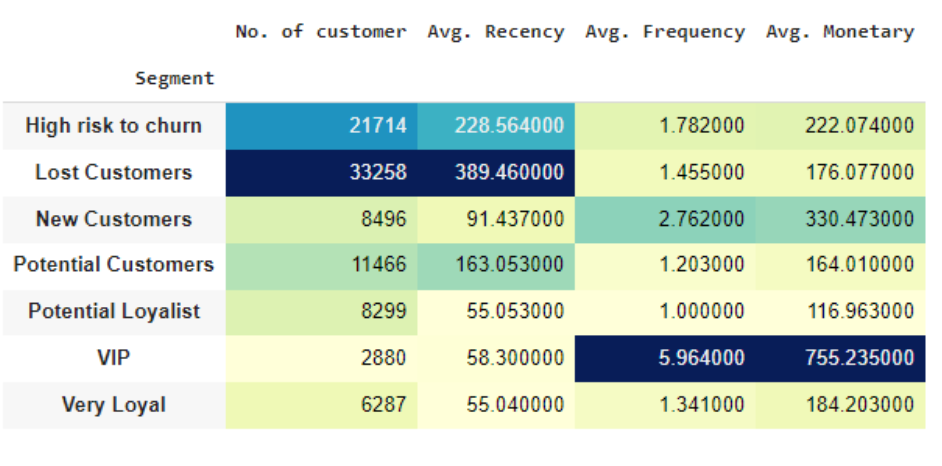Back to Projects
Leveraging RFM Analysis for Customer Segmentation to Boost Customer Engagement within Olist Brazilian E-Commerce Platform
May 2024
RFM Analysis
Customer Segmentation
Customer Retention
E-Commerce

Background
Under the period of February 2017 to August 2018, 96.648% of Olist customers didn’t make a second purchase. Olist Brazilian E-Commerce businesses must modernize their marketing and customer strategies by personalizing them to improve their services, retain customers, and attract new ones.
Methodology
- Define the research questions.
- Collect the data.
- Clean the data.
- Perform Exploratory Data Analysis (EDA).
- Perform Feature Preprocessing to create recency, frequency, and monetary value columns.
- Create RFM segments using quantiles.
- Define RFM segments.
- Group RFM segments.
- Analyzing RFM segments.
- Build a Tableau dashboard.
Conclusion

- An analysis of 75,389 Olist customers revealed that 35.99% are "lost customers," characterized by long purchase intervals and low order volume. Additionally, 23.5% are classified as "high risk to churn" due to their recent purchase inactivity. In total, a concerning 59.49% of our customers exhibit low engagement with the platform. Given the substantial size of this segment, regaining their interest is crucial.
- Conversely, 12.40% of customers are identified as "potential customers," signifying recent purchases but minimal spending.
- The remaining customers are distributed across categories including "new customers," "potential loyalists," "very loyal," and "VIPs," with respective percentages of 9.19%, 8.98%, 6.80%, and 3.12%.
- While attention should be paid to all segments, prioritizing strategies to retain "lost customers" and those at "high risk to churn" is most pressing.
Categories
data analysis
Objectives
- Conduct customer segmentation according to their recency, frequency, and monetary value
- Better understand the characteristics of each segment, then provide a personalized marketing strategy to retain their customers
Tools & Technologies
Python
Pandas
Tableau
Data Source
90,000+ customer purchasing log from Brazilian E-Commerce